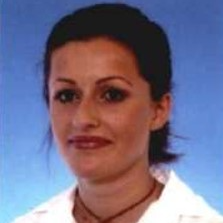Mechanisms and Kinetics of Interactions of Biomolecules at Interfaces
A special issue of Biomolecules (ISSN 2218-273X). This special issue belongs to the section "Biological and Bio- Materials".
Deadline for manuscript submissions: closed (15 July 2023) | Viewed by 15157
Special Issue Editors
Interests: protein adsorption; mechanisms of protein adsorption; stability of biocolloidal suspensions; adsorption of biocolloidal particles; streaming potential; biosensors
Special Issues, Collections and Topics in MDPI journals
Interests: biocompatible polyelectrolyte films; polysaccharides; biomaterials; application of electrokinetic techniques for determination of the properties of nanocomposites; binding proteins to polyelectrolyte multilayers; determination of the stability of polyelectrolyte mono- and multilayers; determination of the physicochemical properties of polyelectrolytes in bulk
Special Issues, Collections and Topics in MDPI journals
Interests: preparation and characterization of mono-, bi-, and multilayers of macroions and nanoparticles; mechanisms of macroion and nanoparticle adsorption; kinetics adsorption and desorption of macromolecules and nanoparticles; macroion adsorption at homogeneous and heterogeneous surfaces; stability of monolayers and bilayers composed of macromolecules and nanoparticles; biocompatibility of composed layered materials; electrokinetic potential at solid/liquid interfaces; streaming potential at solid/liquid interfaces; layer by layer deposition of colloidal particles; polypeptides and their monolayers; nanoparticles/macroions composite material; biological applications of macromolecules and nanoparticles
Special Issues, Collections and Topics in MDPI journals
Special Issue Information
Dear Colleagues,
The adsorption of biocolloids, particularly proteins, at solid/liquid interfaces is important both in terms of their industrial preparation, purification or storage, and due to the wide spectrum of other practical applications. Especially important are the control of protein and cell separation, the production of biosensors and biochips, the transport of medicines, as well as the bio-integration of materials used for the production of medical implants.
Although deposited biomolecules play a crucial role in many processes, the mechanisms and kinetics of the immobilization processes are poorly understood. There is a lack of systematic investigations of the relationship between the deposition conditions and resulting biomolecules’ coverage, local distribution, the orientation of adsorbed particles, and their bioactivity. There is no doubt that all investigations related to biomolecule adsorption at solid substrates are desired.
This Special Issue is devoted to the most recent research focused on the determination of the mechanisms of biomolecules (proteins, peptides, biocompatible macroions) at solid substrates. Potential topics also include the application of new techniques in biomolecules deposition research and the analysis of biomolecules’ interactions with cells, viruses, etc.
Dr. Monika Wasilewska
Dr. Aneta Michna
Dr. Maria Morga
Dr. Andrey G. Cherstvy
Guest Editors
Manuscript Submission Information
Manuscripts should be submitted online at www.mdpi.com by registering and logging in to this website. Once you are registered, click here to go to the submission form. Manuscripts can be submitted until the deadline. All submissions that pass pre-check are peer-reviewed. Accepted papers will be published continuously in the journal (as soon as accepted) and will be listed together on the special issue website. Research articles, review articles as well as short communications are invited. For planned papers, a title and short abstract (about 100 words) can be sent to the Editorial Office for announcement on this website.
Submitted manuscripts should not have been published previously, nor be under consideration for publication elsewhere (except conference proceedings papers). All manuscripts are thoroughly refereed through a single-blind peer-review process. A guide for authors and other relevant information for submission of manuscripts is available on the Instructions for Authors page. Biomolecules is an international peer-reviewed open access monthly journal published by MDPI.
Please visit the Instructions for Authors page before submitting a manuscript. The Article Processing Charge (APC) for publication in this open access journal is 2700 CHF (Swiss Francs). Submitted papers should be well formatted and use good English. Authors may use MDPI's English editing service prior to publication or during author revisions.
Keywords
- biomolecule adsorption
- kinetics of biomolecule adsorption
- mechanisms of biomolecule deposition
- interactions of biomolecules
- techniques for the detection of biomolecules at solid substrates
- interactions of proteins with biomolecules/biopolymers
- protein and biomolecule systems
- protein and biomolecule complexes









